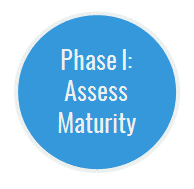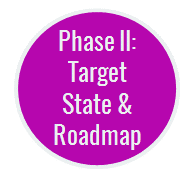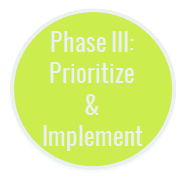Everyone starts from somewhere, so it’s not totally far-fetched to think about someone setting up a Project Management Office (PMO) for the first-time. But to do so with NO project management experience?
Isn’t that unheard of?
Maybe.
Is that even possible?
Yes!
I recently spoke at the PMI Lakeshore chapter in Toronto (Canada) on the topic and had to reiterate that while it is uncommon, it’s definitely on the cards.
As my friend Russell St. Hilaire says, “You cannot become the PMO Leader by becoming a better Project Manager – because IT’S NOT THE SAME JOB!”
In this (pretty) long post, you can expect insights on:
- WAYS YOU CAN BECOME A PMO LEADER
- SKILLS YOU NEED FOR THE ROLE
- MINDSET YOU NEED TO APPLY IMMEDIATELY
- STEP-BY-STEP BREAKDOWN OF SETTING UP A PMO IN 100 DAYS
- BOOSTING YOUR CHANCES OF PMO SUCCESS
WAYS YOU CAN BECOME A PMO LEADER
What career path do you take? Is there a sure shot way to get there?
This to me is very interesting. Let’s take a look.
There are 2 broad categories that offer ways to become a PMO Leader.
- The Conventional Way
So you could be a Business Analyst who becomes a Project Manager and then a Portfolio Manager and then a PMO Leader. Or you could be a PMO Analyst or a Consultant (doing project management work) who becomes a Program Manager and then a PMO Leader. And we haven’t even thrown some other roles like Software Architects or Designers into the mix. Even though this is a conventional journey, there’s no exact mapping to the role of a PMO Leader.
And then there’s the…
- The Non-conventional Way
And you thought that the Conventional Way was convoluted?
Depending on the needs of an organization, you could jump into the role of a PMO Leader straight from an Operations role – because you know:
- the INs and OUTs of the company really well,
- who to work with,
- what to work on, and
- how to get things done
Similarly, you may be frustrated with the way that projects are being managed with no common structure within your company and feel that you must take it upon yourself to rectify this by creating a PMO.
It’s rare that you would see the Unconventional Way pan out in a large, established firm. It’s usually not the first time that a PMO is being set within a large organization, and in their truest intent, they apply what they learnt from their previous attempts at setting a sustained, scalable PMO. These companies also typically have the resources to hire someone (consulting firms or experienced individuals) or promote someone from within (with the right mix of skills and experience) to fix issues in process, structure and all things PMO.
It is more common to see a PMO being setup for the first time in mid-size or small companies (experiencing tremendous growth). The reasons for putting a PMO in place could vary, but all have the general theme of bringing order to chaos. Getting in consulting firms may not be the best option financially, and there may be a limited budget to attract the most qualified external candidates for the job. Monetary reasons aside, and especially for small-to-mid-size organizations, it is more crucial to put someone at the helm of forming a PMO who understands the pulse, culture and dynamics of the firm. Positioning someone from within, who has the interest, inclination, and working relationships, is the best bet then for these companies to get a PMO set up successfully. With this, having project management knowledge or experience becomes a definitive plus but not a showstopper.
Take the case of this PMO Leader I know:
- Part of a small company witnessing turbo-charged growth
- Had a new CTO who wanted to see a PMO setup
- Had no project management background – had strategy consulting experience and was working within the firm with a strong knowledge of the company’s culture
- Armed himself with a 5-day crash course on project management and with the right support structure, was off to the races
Are you in a similar situation? Do you know anyone else who is?
SKILLS YOU NEED FOR THE ROLE
So what do all these permutations tell us about the role?
That:
- There are countless ways to get the opportunity,
- It requires different facets, AND
- Every organization has varying needs and requires different skill-set
Let me be clear.
Before starting the role of a PMO Leader, you NEED to have a basic understanding of the processes, standards and techniques involved in project management.
But you can still skip away without having PRIOR project management experience.
It is NOT YOUR JOB as a PMO Leader to manage projects.
It IS your job to:
- set standards and governance
- align the project portfolio to the organization’s strategies
- prove the need and value of the PMO
- support your team by removing roadblocks out of their way
While these responsibilities DO need project management understanding, they ALSO require
- Organizational knowledge (strategy, culture, regulatory needs, pain points, etc.),
- Business-specific know-how (HR, Marketing, Procurement, etc. – especially if it’s a function-based PMO) and most importantly,
- People skills (relationship building, influence, negotiating, facilitation, etc.)
PEOPLE skills and PROJECT MANAGEMENT understanding are non-negotiables for the role. ORGANIZATIONAL skills are a strong nice-to-have while possessing BUSINESS-SPECIFIC knowledge truly depends on the nature of the PMO.
MINDSET YOU NEED TO APPLY IMMEDIATELY
Even if it’s your first time setting up a PMO, you’ll be considered THE expert immediately within your organization as soon as you get your foot through the door. In order to prove that you’re the right choice for the role, you must demonstrate your readiness by:
- Showing AWARENESS: Bring your big-picture thinking to the table and also quickly identify the context of the PMO setup, assess the immediate challenges you may face and know who you can possibly count on
- Having the right ATTITUDE: This is everything! Your willingness to have a “can-do” attitude and be flexible where required will serve you well throughout your PMO setup journey
- Moving with URGENCY: Time is of the essence and the success of your PMO lies in your organization’s perception of it. Take actions quickly and don’t hesitate to show that you’re on the move. In fact, make it a point that you’re sharing your plans, actions and results with the right audience
Here’s how you can make a mark.
STEP-BY-STEP BREAKDOWN OF SETTING UP A PMO IN 100 DAYS
The first 100 days for any leader entering office marks a major milestone. He/she is judged on the performance during that period and the opinion set during that time persists throughout his/her tenure.
As a PMO Leader, you should take this standard upon yourself. This will most likely not be set as an expectation by your stakeholders, but this plan of action will be largely appreciated by them.
Here’s how to go about it: use the KEY STEPS and TOP 3 CHECKLIST ITEMS from each phase to build and execute your robust 100-day plan. Expect to have some phase overlap.

Days 0 – 28 >> Phase I: Assess Maturity
Key Steps
- Understand the current state of the PMO and the organization within which it resides
- (If there is no PMO currently in place, then skip this step)
- Put the organization under the lens and assess its focus on processes, cross-department synergies, decision-making maturity, and technology orientation
- (Helps you assess the conditions of the readiness of having a PMO)
- Determine strengths, weaknesses, gaps and consequently place the PMO within the appropriate maturity level
- (Can you setup a mature PMO right off the bat? Do you need to setup a nascent-level PMO and plan its maturity over time?)
Top 3 Checklist Items
- Identify key stakeholders and interview them
- (Understand pain-points and desires, do a gut check on who you can count to support you, who might pose roadblocks for you, who you need to educate on PMOs, and start building relationships)
- Assess PMO staff and resources and determine any immediate hiring needs
- (Similar suggestions as with stakeholders – your staff are your stakeholders too!)
- Identify quick-wins to be achieved in 100 days
- (E.g. these could be 1. useful, instructional templates, OR 2. project management standards in non-project management language so others can understand them; the quick-wins really depend on the challenges that you’ve identified during your interviews)
ALERT: The most common reason why PMOs fail is due to (lack of) executive buy-in. Pay special attention to i) educating your executives on PMOs, ii) aligning with them on the influence and responsibilities of your PMO and most importantly iii) building relationships with them so that they buy into YOU, YOUR ideas and ultimately YOUR PMO.

Days 21 – 49 >> Phase II: Establish Target State & Define Roadmap
Key Steps
- Define target state for the PMO based on executive sponsorship and organization adaptability – the PMO evolvement is directly proportional to that of its organization
- (If you try to be more mature than your organization can accept you to be, you will not succeed)
- Carve out the scope of the PMO in terms of its role, target business areas and geographic locations, and the nature of projects it must address
- (This is KEY and must get absolute and resolute agreement with your sponsors – use your negotiation chops to get this as close to possible to the grand vision you have for your PMO, even if the evolution is expected to be in phases)
- Specify metrics and qualitative indicators to gauge the performance of the PMO
- (YOU have to drive this conversation and come up with the metrics and indicators that make sense for your PMO in your organization and seek agreement from your stakeholders on them)
Top 3 Checklist Items
- Review and finalize PMO business case
- (This is the tool to use to achieve all the key steps mentioned above for Phase 2. Don’t have a business case template in your organization? Create one. If you do, then use it and don’t waste time creating something else – executives get used to how they view and translate information – if one way is working well, then use that to your advantage to get your PMO vision across to them)
- Start hiring for resources to help setup PMO
- (Start now so that you have help in time to start executing the PMO setup)
- Identify 1-2 milestones to be achieved in 100 days
- (In Phase 1, you identified a few quick wins that you can achieve in the first 100 days. In Phase 2 you add on to that by adding 1-2 major milestone achievements that you can realistically achieve)

Days 35 – 84 >> Phase III: Prioritize & Implement
Key Steps
- Implement PMO pilot(s)
- (This is where the real action happens – roll-out the plan and make it a reality; usually one (1) pilot suffices and there typically is a threshold of doing just one before the full, phased roll-out but you should not hesitate to take away any learnings from your pilot and early roll-out phases to include in the execution of later phases)
- Prioritize sections / phases of PMO roll-out
- (This depends on the scope and area of influence of the PMO – will you be rolling-out various PMO services first or focus on a certain set of stakeholders before others or perhaps limit your roll-out to a specific geography?)
- Implement full roll-out
- (Not much more to say here)
Top 3 Checklist Items
- Incorporate lessons learned from pilot(s) and update PMO business case
- (Updating the business case is important because this is what will be used to judge the performance of the PMO – if something was found during the pilot that is worth noting down, then don’t ignore this important step)
- Conduct road-shows across the organization
- (Let your stakeholders know that the PMO is coming their way; make it an eventful and exciting experience for them – and by that, I am not suggesting that you spend a lot of funds to have a “grand entrance” party – what I AM pointing out however, is that you customize your message for every stakeholder group that relates to why the PMO is going to benefit them – tie this to the conversations that you had with them in Phase 1 and make them feel that THEY are the reason you’re setting up the PMO)
- Achieve one major milestone
- (This is one of the major milestones you identified in Phase 2)
ALERT: Introduction of processes and governance is often met with perception of red-tape and ultra-policing. In the early days, i) bend backwards to ensure that processes fit organizational culture and ii) focus on getting things done vs. completing documentation

Days 77 – 100 >> Phase IV: Optimize
Key Steps
- Evaluate the PMO’s performance metrics and solicit qualitative feedback from key stakeholders periodically
- (You need data to know how you’re really doing; make this a habit and you can always have supporting material to back-up the reason why you and your PMO should be around; plus, you will also get brownie points for showing your stakeholders that you care)
- Generate and share PMO progress report to key stakeholders
- (Be proud to share what others think of you)
- Make business case to motivate organization to achieve the next level of PMO maturity, focus, or area of impact
- (Grow your PMO based on what you hear and see; this way you are growing based on the capacity of your organization to accept your PMO)
Top 3 Checklist Items
- Create standard PMO progress metrics dashboard
- (This will take a couple of iterations to get to a point of acceptability from your key stakeholders but have this in place for reporting on the strides you make)
- Publicize early success across the organization
- (First project completed on time? New, easy-to-understand templates available? Refined work intake process? Let everyone in your company know about it. Put up posters next to the elevators. Send it through the company monthly newsletter. Create your own special e-mailing list. Get someone else to sing your praises. You get the point)
- Create plan to increase competence/skill/usability maturity of PMO staff and resources
- (Over time, expectations from your PMO will increase and inherently, from the people who man it; invest in the personal and professional development of your resources so they can support you in your PMO growth execution)
BOOSTING YOUR CHANCES OF PMO SUCCESS
Did you know that 50% of PMOs fail within 3 years? That’s the reality according to the Association for Project Management (APM)!
This is true whether you have prior PMO experience or not.
A scary thought, isn’t it?
Pay special attention to the ALERTs called out earlier in the post.
Additionally, use these TIPS to tilt the balance your way:
- Maintain a mindset of adding value to your leadership while helping project managers at the same time:
- Be transparent with your project managers as much as you can; they are your front-line and can make or break you
- Don’t forget about learning on-the-job:
- The role of a PMO Leader is fast-paced with a lot of expectations early on. You need to quickly identify your plan and move full-steam ahead. Even though you may have the skills required, nothing trumps experience for getting a lot of “on-the-job” learning. Stand on the shoulders of those who have been there and who can help you think big, see further ahead or just be a sounding board. Look for mentors within your organization if it has other PMOs. Outside MENTORS AND COACHES can be a fantastic asset too as they can give you on-demand, personalized advice which you can apply timely and effectively
- Assemble the right staff to help you deliver:
- Surround yourself with the right resources of portfolio / program / project managers and business analysts who you can trust to deliver. They can deliver the pilot and be champions for it.
- You need folks who understand the
- Company and systems well
- Metrics involved and can translate data into information
- Vision of the PMO and buy into it
- Surround yourself with the right resources of portfolio / program / project managers and business analysts who you can trust to deliver. They can deliver the pilot and be champions for it.
That’s all folks!
I’d love to hear from you if you enjoyed reading this as much I enjoyed writing it.
What resonated with you the most?
How quickly can you put it into action?
Anything else that you may need to help you get started off with your PMO?
Simply leave a comment below and let me know!
